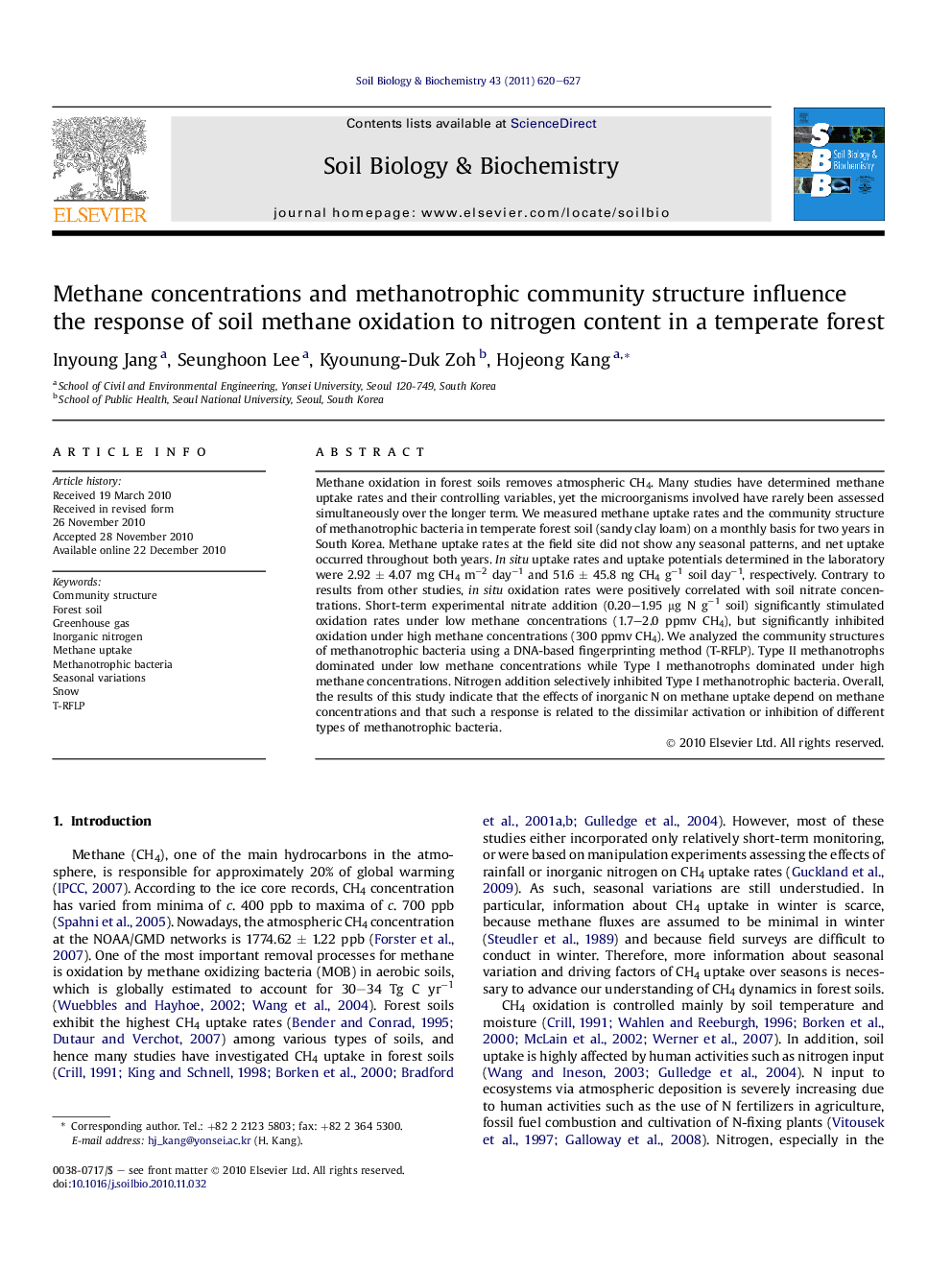| Article ID | Journal | Published Year | Pages | File Type |
|---|---|---|---|---|
| 10846006 | Soil Biology and Biochemistry | 2011 | 8 Pages |
Abstract
Methane oxidation in forest soils removes atmospheric CH4. Many studies have determined methane uptake rates and their controlling variables, yet the microorganisms involved have rarely been assessed simultaneously over the longer term. We measured methane uptake rates and the community structure of methanotrophic bacteria in temperate forest soil (sandy clay loam) on a monthly basis for two years in South Korea. Methane uptake rates at the field site did not show any seasonal patterns, and net uptake occurred throughout both years. In situ uptake rates and uptake potentials determined in the laboratory were 2.92 ± 4.07 mg CH4 mâ2 dayâ1 and 51.6 ± 45.8 ng CH4 gâ1 soil dayâ1, respectively. Contrary to results from other studies, in situ oxidation rates were positively correlated with soil nitrate concentrations. Short-term experimental nitrate addition (0.20-1.95 μg N gâ1 soil) significantly stimulated oxidation rates under low methane concentrations (1.7-2.0 ppmv CH4), but significantly inhibited oxidation under high methane concentrations (300 ppmv CH4). We analyzed the community structures of methanotrophic bacteria using a DNA-based fingerprinting method (T-RFLP). Type II methanotrophs dominated under low methane concentrations while Type I methanotrophs dominated under high methane concentrations. Nitrogen addition selectively inhibited Type I methanotrophic bacteria. Overall, the results of this study indicate that the effects of inorganic N on methane uptake depend on methane concentrations and that such a response is related to the dissimilar activation or inhibition of different types of methanotrophic bacteria.
Keywords
Related Topics
Life Sciences
Agricultural and Biological Sciences
Soil Science
Authors
Inyoung Jang, Seunghoon Lee, Kyounung-Duk Zoh, Hojeong Kang,
